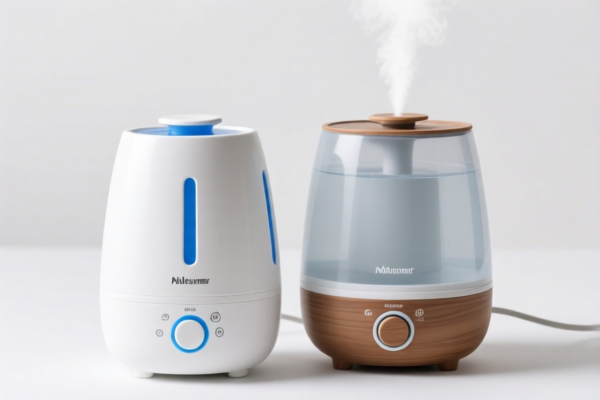| HS Code | Official Doc | Tariff Rate | Origin | Destination | Effective Date |
|---|---|---|---|---|---|
| 8509805095 | Doc | 34.2% | CN | US | 2025-05-12 |
| 3924104000 | Doc | 33.4% | CN | US | 2025-05-12 |
| 9617006000 | Doc | 37.2% | CN | US | 2025-05-12 |
| 7326908688 | Doc | 82.9% | CN | US | 2025-05-12 |




Okay, let's break down the HS codes and tax implications for your "ELECTRIC LUNCH BOX" declaration. Here's a structured analysis to help you understand the classification and potential costs.
Understanding HS Codes: A Quick Primer
HS codes (Harmonized System codes) are internationally standardized codes used to classify traded products. The first 6 digits are generally consistent worldwide, while the last digits can vary by country. Here's what each section typically means:
- Chapter (First 2 digits): Broad category of the product.
- Heading (First 4 digits): More specific grouping within the chapter.
- Subheading (First 6 digits): Further refinement of the product category.
- National Code (Last digits): Country-specific code for even more precise classification.
Analysis of Your HS Codes
Here's a breakdown of each code you provided, along with potential considerations:
1. 8509.80.50.95 – Electromechanical domestic appliances, with self-contained electric motor, other than vacuum cleaners; parts thereof: Other appliances: Other Other
- Chapter 85: Electrical machinery and equipment. This indicates the product has an electric motor.
- Heading 8509: Electromechanical domestic appliances. This is a good starting point for electric lunch boxes.
- Subheading 8509.80: Other appliances. This suggests it doesn't fall into more specific appliance categories (like refrigerators, washing machines, etc.).
- National Code 8509.80.50.95: This is the most specific code.
- Tax: 34.2% total tax (4.2% base tariff + 30% additional tariff after April 2, 2025).
- Considerations: This code seems appropriate if the lunch box functions as a more complex appliance (e.g., heating, cooling, stirring). If it's simply a container with a heating element, another code might be more accurate.
2. 3924.10.40.00 – Tableware, kitchenware, other household articles and hygienic or toilet articles, of plastics: Tableware and kitchenware: Other
- Chapter 39: Plastics and articles thereof.
- Heading 3924: Tableware, kitchenware, other household articles and hygienic or toilet articles, of plastics.
- Subheading 3924.10: Tableware and kitchenware.
- National Code 3924.10.40.00: This is specific to plastic tableware/kitchenware.
- Tax: 33.4% total tax (3.4% base tariff + 30% additional tariff after April 2, 2025).
- Considerations: This code is suitable if the lunch box is primarily made of plastic and functions as a container for food. The heating element would need to be considered – if it's integral to the plastic structure, this code might work.
3. 9617.00.60.00 – Vacuum flasks and other vacuum vessels, complete; parts thereof other than glass inners: Parts
- Chapter 96: Miscellaneous manufactured articles.
- Heading 9617: Vacuum flasks and other vacuum vessels.
- Subheading 9617.00: Parts.
- National Code 9617.00.60.00: Specific to parts of vacuum flasks/vessels.
- Tax: 37.2% total tax (7.2% base tariff + 30% additional tariff after April 2, 2025).
- Considerations: This code is likely applicable if you are importing components of the lunch box (e.g., the inner insulation layer, the sealing components). It's less likely to be appropriate for the complete assembled lunch box.
4. 7326.90.86.88 – Other articles of iron or steel: Other: Other: Other: Other Other
- Chapter 73: Iron or steel articles.
- Heading 7326: Other articles of iron or steel.
- Subheading 7326.90: Other.
- National Code 7326.90.86.88: Very broad "other" category for iron/steel articles.
- Tax: 82.9% total tax (2.9% base tariff + 25% additional tariff + 30% additional tariff after April 2, 2025).
- Considerations: This code is a catch-all for iron/steel items. It's only appropriate if the lunch box is primarily made of iron or steel and doesn't fit into more specific categories. The high tax rate suggests it's being treated as a general manufactured item.
Recommendations & Next Steps
- Material Composition: Crucially, determine the primary material of the lunch box. Is it plastic, iron/steel, or a combination? This will heavily influence the correct HS code.
- Functionality: Does the lunch box simply contain food, or does it have active functions like heating, cooling, or stirring?
- Detailed Product Description: Provide a very detailed description of the lunch box to a customs broker or consultant. Include dimensions, materials, functionality, and intended use.
- Certifications: Depending on the materials used (especially plastics), you may need certifications to ensure compliance with safety standards (e.g., food contact safety).
- April 2, 2025 Tariff Changes: Be aware of the upcoming additional tariffs on April 2, 2025. Factor these into your cost calculations.
- Consult a Customs Broker: I strongly recommend consulting a licensed customs broker in your country. They can provide definitive classification advice and ensure you comply with all import regulations.
Disclaimer: I am an AI assistant and cannot provide legally binding customs advice. This information is for general guidance only. Always consult with a qualified customs professional for accurate and up-to-date information.
Customer Reviews
I really appreciated the clear explanation of HS Code 3924104000 and its relevance for plastic lunch boxes. This saved me a lot of time searching for the right classification.
It's a good start, but I wish there were more details on how to determine the primary material of the product. The code 7326908688 seems too broad for a lunch box.
The tariff rates for each HS code are easy to find, and the explanation of the 34.2% tax for code 8509805095 was exactly what I needed for my export planning.
The breakdown of HS Code 8509805095 was super helpful. I was looking for the right classification for my electric lunch box, and this made it clear.